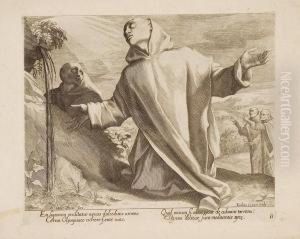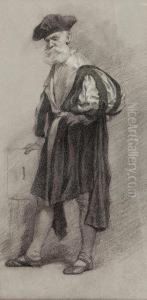Kruger Theodor Paintings
Theodor Kruger, born in 1830 and passing away in 1921, was a German painter known for his mastery in landscape and maritime painting. His life spanned a significant period of European art history, witnessing the transition from Romanticism to more modern movements. However, Kruger's work remained deeply rooted in the Romantic tradition, emphasizing the beauty and power of nature.
Kruger was born into a period of intense artistic and political change in Germany. The early 19th century saw a burgeoning romantic movement, which celebrated emotion, nature, and national identity. This movement significantly influenced Kruger's early development as an artist. He trained at the prestigious Academy of Arts in Berlin, where he was exposed to the works of the Romantic landscape painters. These early experiences shaped his artistic vision, which was characterized by a profound appreciation for the natural world.
Throughout his career, Kruger traveled extensively across Europe, capturing the continent's diverse landscapes and seascapes. His paintings often depicted dramatic skies, turbulent seas, and serene countryside scenes, imbued with a sense of awe and grandeur. Kruger's ability to convey the mood and atmosphere of a place garnered him considerable acclaim during his lifetime.
Despite the advent of Impressionism and other modern movements in the late 19th and early 20th centuries, Kruger remained faithful to the Romantic ideals of his youth. His works continued to celebrate the sublime aspects of nature, rather than shifting towards the experimentation with light and color seen in his contemporaries' works. This adherence to Romanticism at a time of significant artistic change highlights Kruger's importance as a bridge between eras, maintaining a link to the past while contemporary art moved in new directions.
Kruger's legacy is that of a dedicated landscape painter who captured the ephemeral beauty of the natural world. His paintings, characterized by their detailed realism and emotional depth, have continued to be appreciated for their aesthetic qualities and as records of the romantic spirit in German art. While he may not have been at the forefront of the avant-garde movements of his time, Kruger's work remains an important part of the 19th-century art historical canon, reflecting both the continuity and the changes in the art world during his lifetime.

